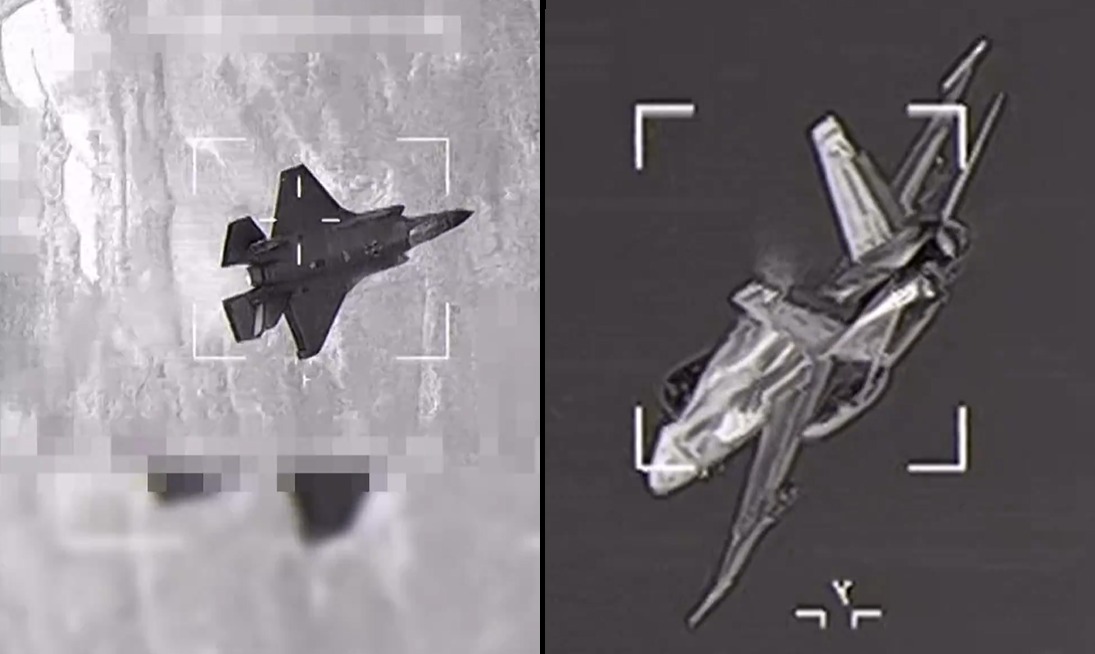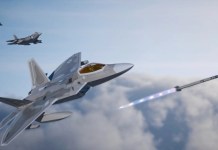The French Dassault Rafale may have “scored a kill” against the American F-35 stealth fighter at a multinational military exercise in Finland. The feat comes years after it achieved an unexpected kill against an F-22 Raptor in 2009 wargames in the United Arab Emirates (UAE).
As the newest member of the NATO alliance, Finland hosted Exercise Trident Atlantic 25, with forces from Finland, France, the United Kingdom, and the United States in attendance.
The two-week tactical and operational training exercise was held across multiple locations in the country from June 16 to 27.
In terms of tactical jets, the US Air Force (USAF) sent the F-35A Lightning II and F-15E, and the Finnish Air Force participated with F/A-18 Hornets. Meanwhile, the French Air and Space Forces sent Rafale, and the Royal Air Force deployed the Eurofighter Typhoon.
“This type of exercise, for us, means to train together,” said French Air and Space Force Col. Vincent, a Rafale aircraft pilot at the time. “We know we can fight together, and we know we can exchange and distribute our capabilities.”
Interestingly, the official X account of the French Air and Space Force posted a video clip from Trident Atlantic 25 of what appears to be a mock drill on August 20, two months after the drills concluded.
At 0:15 seconds in the footage, a French Rafale pilot is seen locking an F-35 from its IRST (Infrared Search and Track) in a Basic Fighting Manuever (BFM), also called dogfighting, within visual range. The frame shows a close-up of the target acquisition as the video proceeds, marking a kill.
🇫🇮 Pour la 1ère fois, l’exercice trilatéral #AtlanticTrident s’est tenu en #Finlande, nouveau membre de l’#Otan depuis 2023.
Objectif : renforcer l’interopérabilité entre les forces aériennes 🇺🇸🇬🇧🇫🇷 face aux défis de la haute intensité.
Pour en savoir + : https://t.co/CXeOZCp7Al pic.twitter.com/5eTq97AQ8v— Armée de l'Air et de l'Espace (@Armee_de_lair) August 20, 2025
It is relevant to note here that “scoring a kill” in training means only the radar locking, and not actually firing the missile at the target.
In fact, the F-35 in question would have gotten the radar lock tone on its RWR (radar warning receiver) when it was tracked and locked on by the adversary, an expert told the EurAsian Times.
The post made no mention of the dogfight.
This is the first time that a participant of the Trident Atlantic 25 has disclosed the aerial duel in which the Rafale locked onto the F-35, supposedly a superior aircraft in terms of stealth.
The video of the engagement was reshared by netizens (mostly French), most of whom emphasised how the French Rafale, a 4.5th-generation fighter, dominated and scored a kill against the combat-hardened American fifth-generation stealth fighter.

The timing of this video is immaculate, as it comes at a time when France has positioned the Rafale as an alternative for the F-35 for countries that are growing skeptical of American equipment under the Trump administration.
Even though the US and France are close NATO allies, their respective fighter jets are often seen as rivals, especially in the export market.
In recent months, the French President Emmanuel Macron has been wooing customers for the Rafale by exploiting the calls for “self-reliance” across Europe. Those efforts, however, have had little impact, and more countries have placed supplemental orders for the F-35 in recent times, as recently reported by the EurAsian Times.
Despite being a cutting-edge, lethal fighter jet, the Rafale has trailed behind the F-35 in the export market as buyers prioritize fifth-generation stealth jets.
The reputation of the French Dassault aircraft has somewhat been dented following the latest Indo-Pakistan conflict, during which Pakistan Air Force (PAF) claimed to have downed three Indian Rafale jets.
Though presented without evidence, the claims have been largely accepted by Western media and analysts. India has accepted the loss of the Rafale aircraft due to a technical error and not to hostile fire.
The video of the engagement at Trident Atlantic 25 might just redeem confidence in the aircraft that has already been known to have state-of-the-art self-defense systems, a new-generation electronic radar with excellent sensor integration, attack-navigation systems, and deadly air-to-air and air-to-surface weaponry.
While truly a spectacular feat, this is not the first time that a Rafale has scored a kill against an American fifth-generation stealth fighter. Before the F-35, the American F-22 Raptor was locked and “killed” by the French fighter jet.

When Rafale Scored A Kill Against F-22 Raptor
In November 2009, during a joint drill in the United Arab Emirates, a Lockheed Martin F-22 Raptor of the United States Air Force was “shot down” by a Rafale in a training duel.
The controversial event happened when US F-22s visited the United Arab Emirates for training alongside the UAE Air Force (Mirage 2000), the British Royal Air Force (Typhoons), and the French Air Force (Rafales).
Pilots from all over the world competed against one another in a variety of training exercises over many days.
Needless to say, the F-22, said to be the greatest air superiority fighter jet in the world, performed exceptionally well during the simulated sorties, bringing down six Rafales. However, a French pilot changed the tide unexpectedly. He pushed his plane to the limit, apparently hitting 9Gs, and locked onto a Raptor.
This was the first time that a 4.5th-generation Rafale had scored a kill against the Raptor.
Although the American pilots had maintained that their planes had never lost a battle, the French Ministry of Defense posted a video in June on their website that showed a Rafale moving into a good position to lock the F-22 in its range in order to launch the infrared-guided Mica missile against the defending F-22.
The French Air and Space Forces have somewhat repeated history by locking an American stealth aircraft in mock drills, and releasing a video later, to prove what their state-of-the-art fighter jet is capable of.
It is safe to say that Dassault Aviation and the French government can leverage their performance against what are believed to be the most advanced combat aircraft.
- Contact the author at sakshi.tiwari9555 (at) gmail.com
- Follow EurAsian Times on Google News




